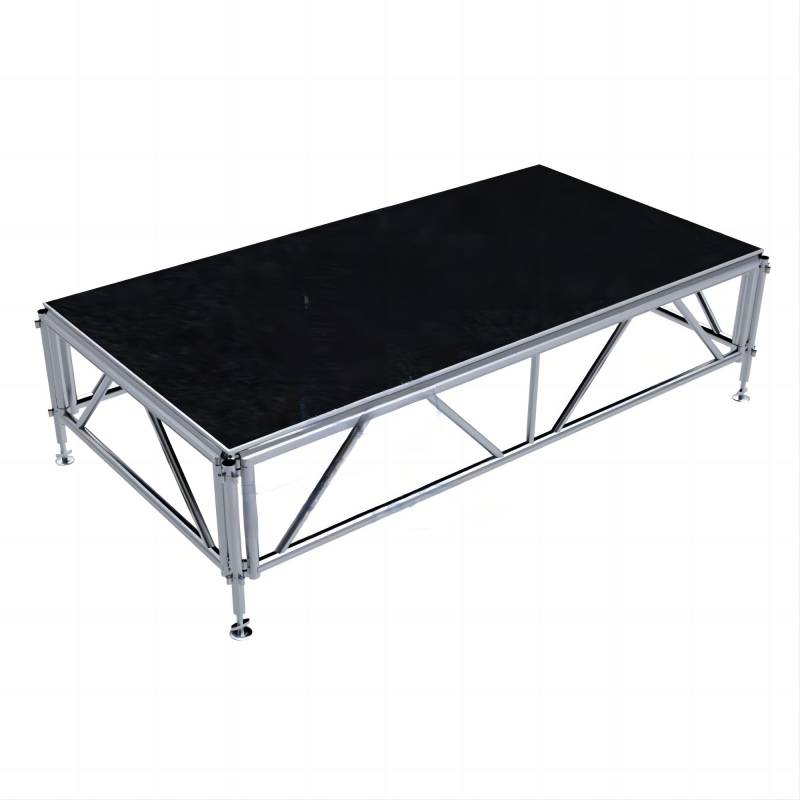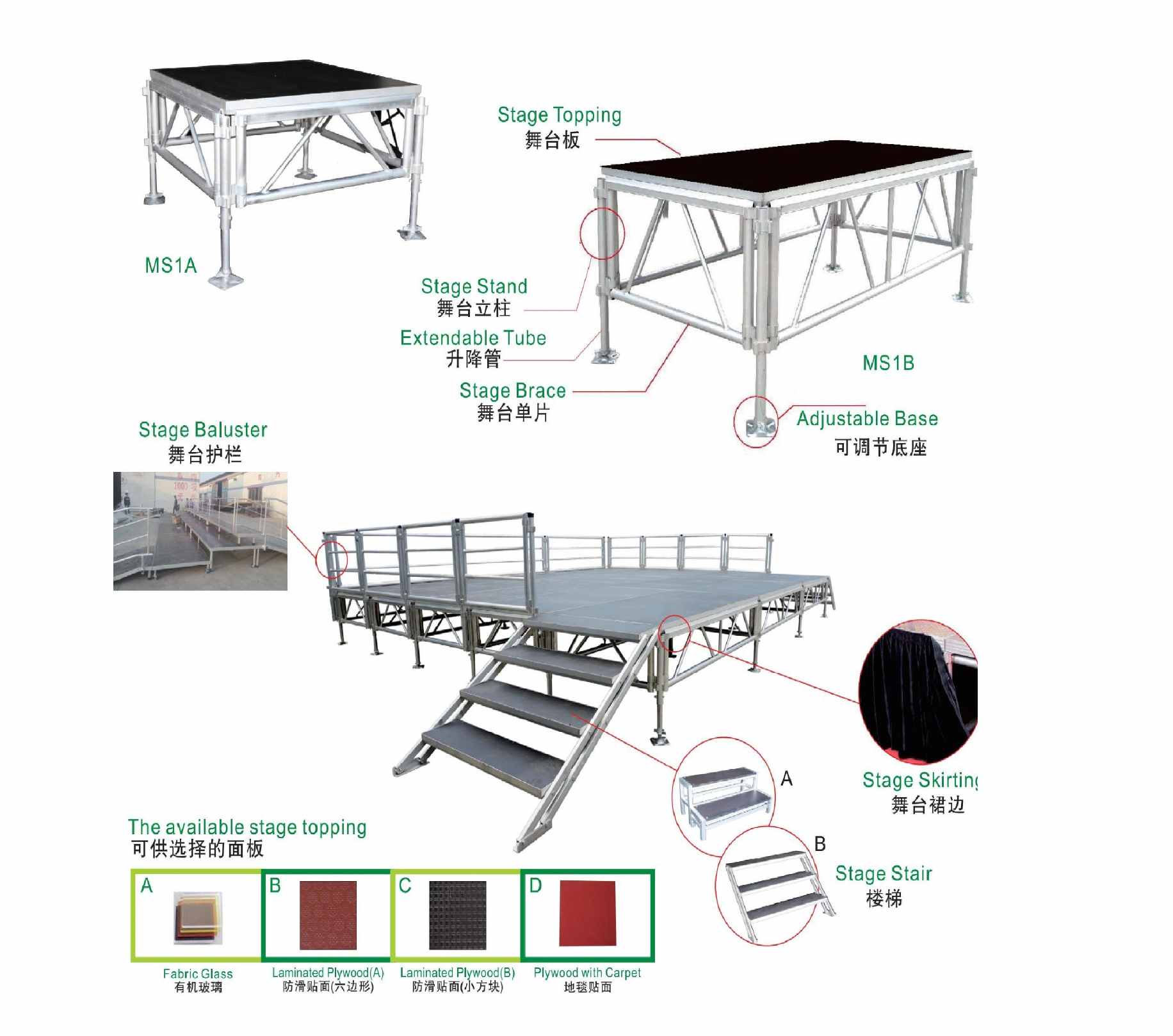What Are You Looking For?
Modular Design:
The stage platform is designed in modular sections, which can be easily connected or disconnected to adjust the size or configuration of the stage.
This modular design enables versatility in setup, allowing the stage to be tailored to the specific needs of each event, whether it's a small concert, a presentation, or a community gathering.
Aluminum Frame:
The frame of the stage is typically constructed from lightweight yet durable aluminum alloy. This material provides structural integrity while being easy to transport and set up.
| 0.4-0.8m | 0.8-1.2m | 1.2-2m | |
| packing weight | 570kg | 650kg | 730kg |
| packing volume | 3cbm | 4cbm | 4.5cbm |
| Item | Specification | Quantity | |||
| Aluminum assembly stage | topping: 4x8ft (1.22x2.44m) |
wooden | 9 pcs | ||
| 1.22m stage brace | 12 pcs | ||||
| 2.44m stage brace | 12 pcs | ||||
| stand with extendable tube | 16 pcs | ||||
| Stage adjustable base | 16 pcs | ||||
| Stage Stair | wooden topping | total | 8 | steps | 2 pcs |
Aluminum Frame:
Main Beams: These horizontal beams form the framework of the stage and provide support for the decking panels.
Cross Bracing: Diagonal braces strengthen the frame structure and prevent swaying or wobbling.
Leg Assemblies: Adjustable legs with leveling feet or base plates support the frame and allow for height adjustment to accommodate uneven terrain.
Decking Panels:
Aluminum or Plywood Panels: These panels form the surface of the stage platform, providing a stable and non-slip surface for performers and equipment.
Interlocking Design: Panels are typically designed to interlock securely, ensuring stability and uniformity across the stage surface.

